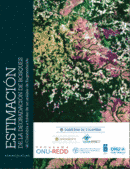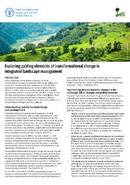Publications
Difficulty in defining and quantifying forest degradation is a limitation for many developing countries when estimating emission reduction commitments in the context of REDD+. This publication explains how to evaluate and assess forest degradation in Colombia by using fragmentation analysis. This methodology can be used to determine biomass change across different types of forest cover...
This publication provides methodological guidelines to integrate information gathered at different temporal and spatial scales. It argues for the comparability and interoperability of statistical data on deforestation, its causes and the agents involved. Available only in Spanish.
Highlighting the key role of participatory community monitoring for national forest monitoring systems, this report proposes specific actions to integrate community knowledge into national policy (such as by providing data collection tools). Available only in Spanish.
Great emphasis is currently being placed on achieving transformational change and paradigm shift through policies and measures to implement the Paris Agreement and the UN 2030 development agenda. FAO and CIFOR are partnering in leading research with international experts and partners to identify triggers and drivers of transformational change across...
Peatland drainage - mainly for agriculture, grazing and forestry - and peat fires are responsible for almost one quarter of carbon emissions from the land use sector. Peatlands and organic soils contain 30 percent of the world’s soil carbon but only cover 3 percent of the Earth’s land area. Peatlands...





